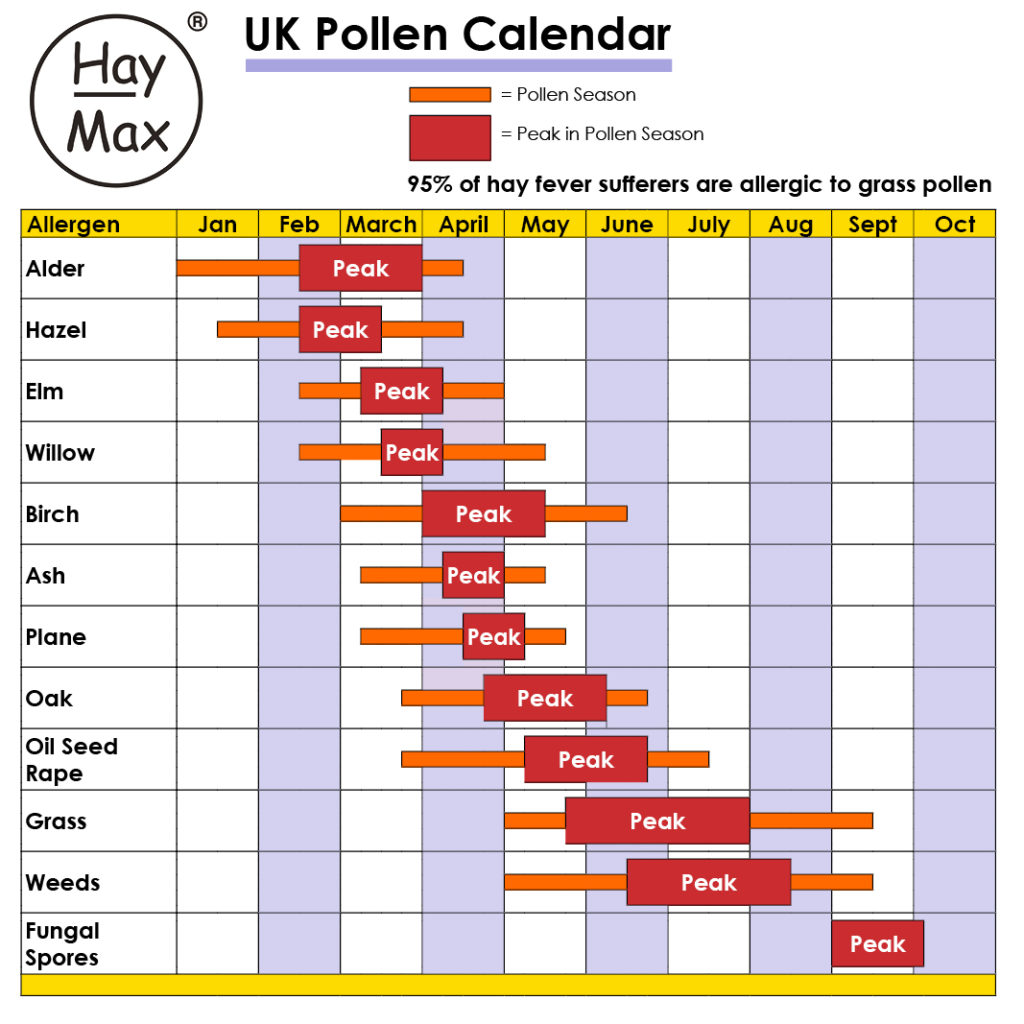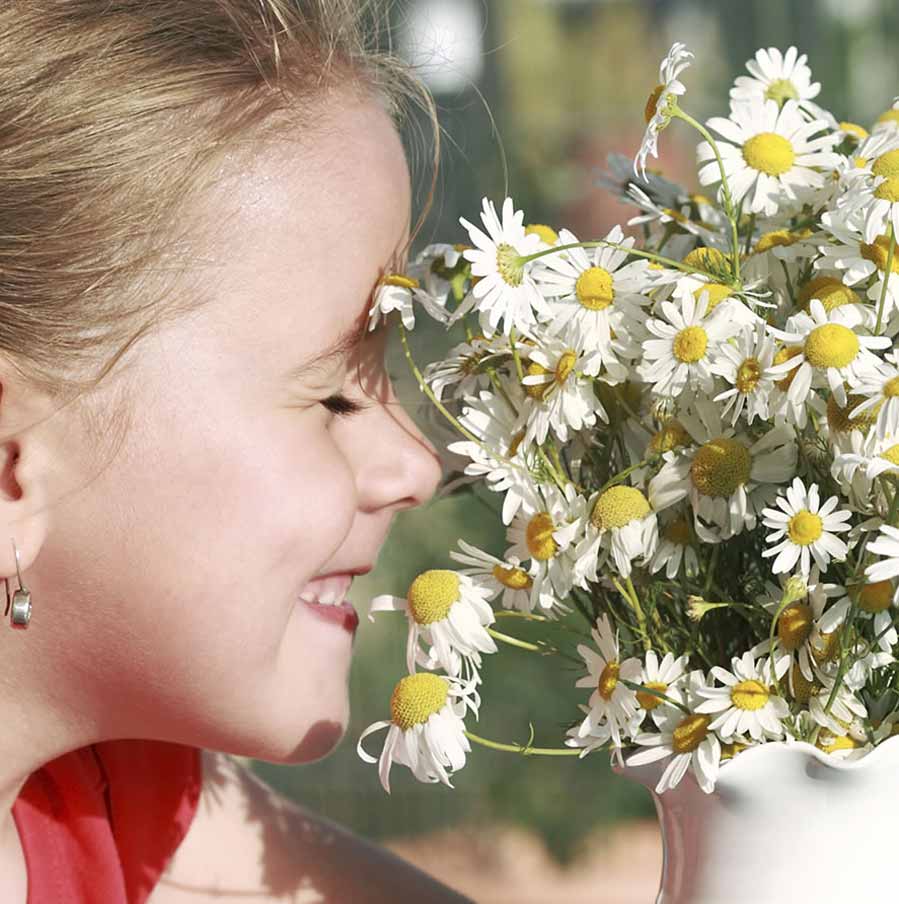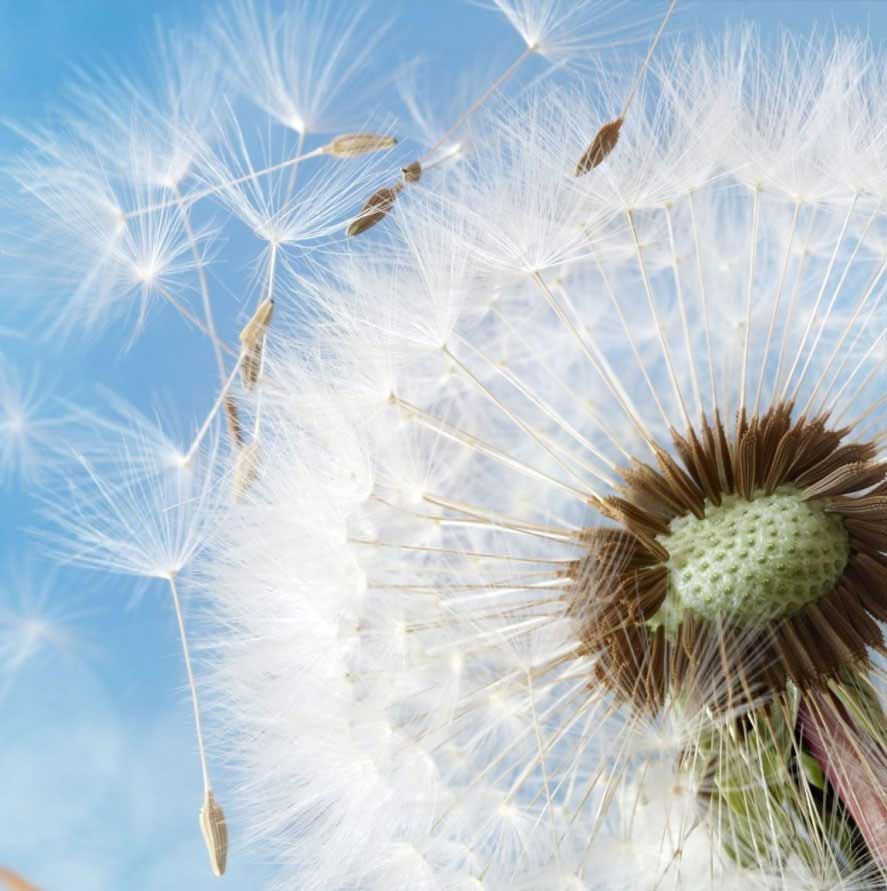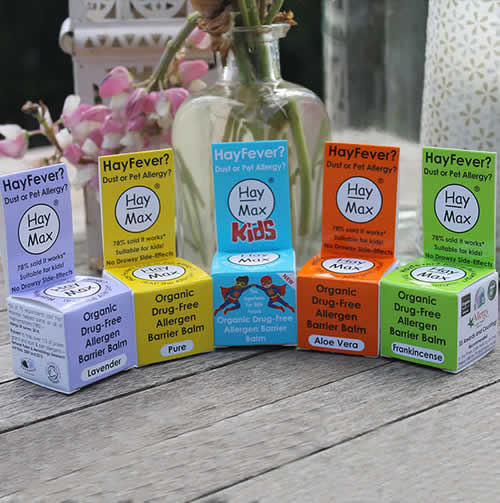Pollen Forecast and Pollen Calendar
Pollen Forecast
The Pollen Forecasts have now finished for this year and will return in the spring of 2021. The main pollen season is now over although there may still be occasional days when pollen counts rise slightly. We know (because you tell us) that hay fever is not over for everyone. Some weeds and even some grasses might still release pollen through to the end of September, and fungal spores will be released through September and into October. But the data is no longer available to us until the spring of next year, when the trees will start to release their pollen again.
The pollen count is measured according to the number of pollen grains per cubic metre of air. The pollen count forecast can help you to judge if your hay fever symptoms will be particularly severe on any given day. As a general guide, the pollen count tends to be lower on rainy days and higher when it’s hot and sunny.
Many hay fever sufferers start to experience symptoms when the count reaches ‘medium’. Counts will be higher near to large sources of grass pollen including hay meadows.
If you want more tips on how to deal with hay fever, have a look at our hay fever guide.
There’s lots of information on the site so please have a little browse while you’re here.
Our Calendar
There are two main types of pollen which affect hay fever sufferers in the UK – grass pollen and tree pollen. Tree pollen starts in February-March and peaks in May. Grass pollen appears between May and September and peaks during May and June. In addition, some sufferers are affected by weed pollen, which appears from the end of June to September. Check out the pollen calendar below.

Understanding which types of pollen you are allergic to can help you to plan your allergy management better.
Pollen from flowers is rarely a problem. Flowers are pollinated by bees and the pollen is usually too heavy to be blown around by the wind. However, plants, trees and flowers that are wind pollinated will cause problems and the male plant (or tree) is usually the main producer of pollen.




